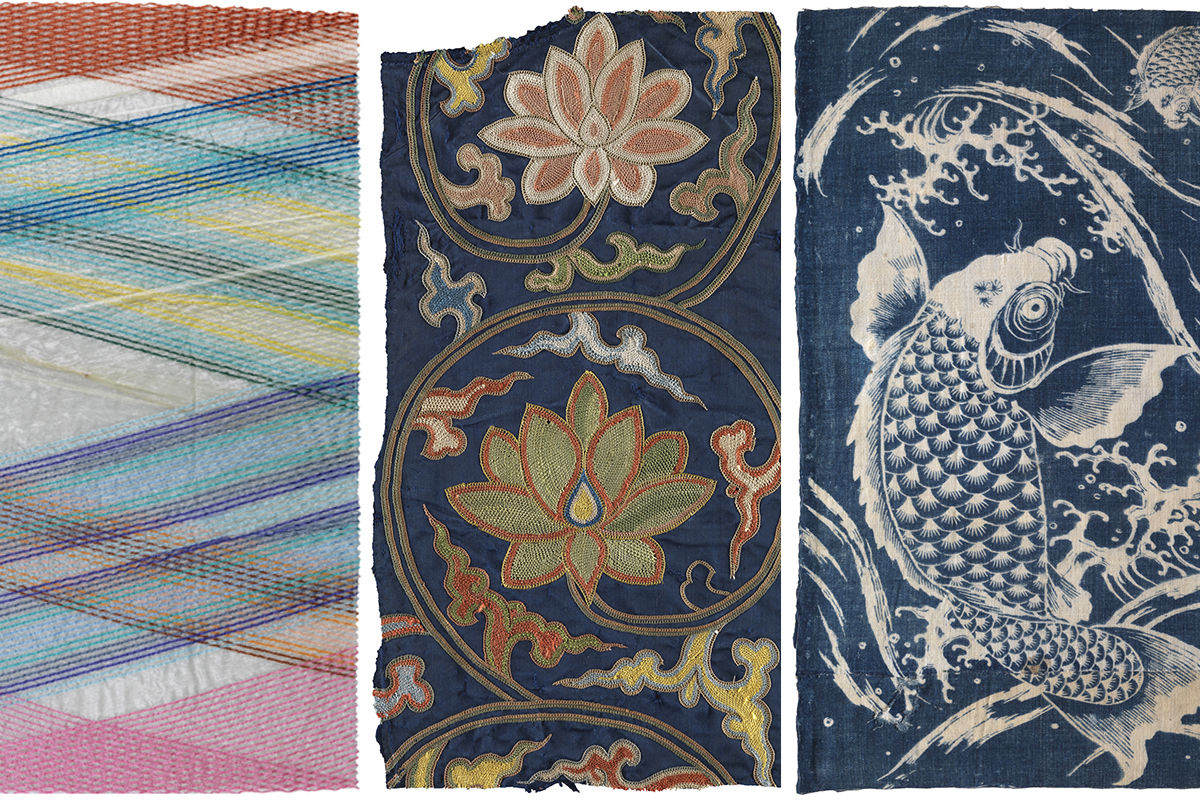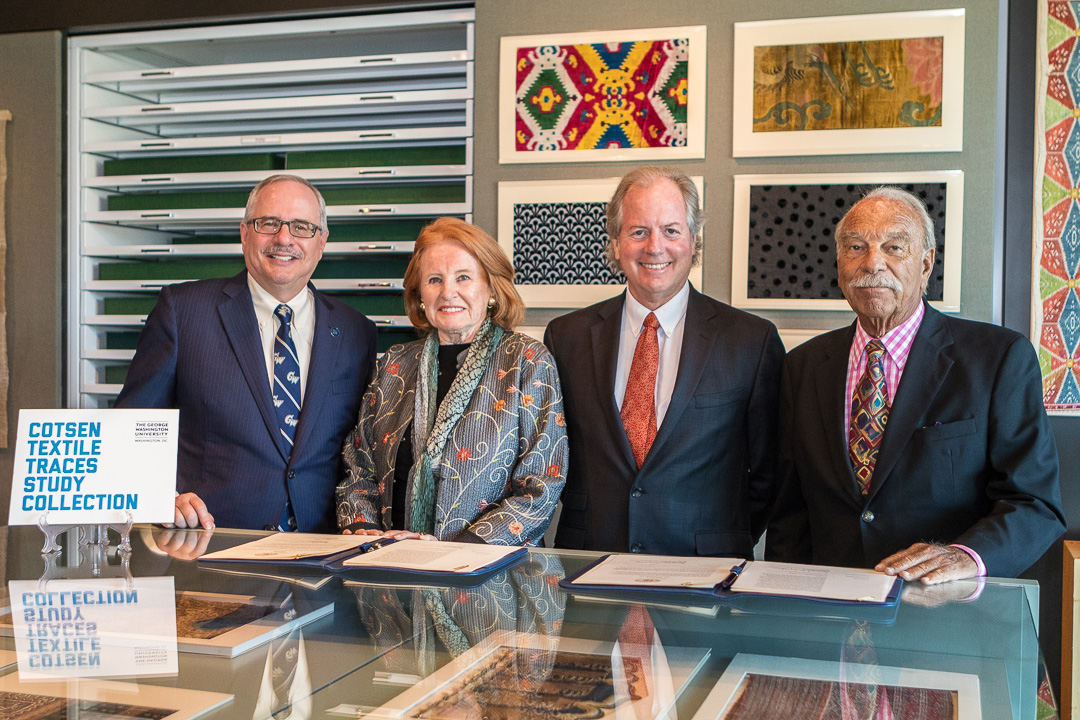By Ruth Steinhardt
The George Washington University Museum and The Textile Museum marked the soft launch of the Cotsen Textile Traces Study Center, a space dedicated to the Cotsen Textile Traces Study Collection. The university received this collection in 2018, and it comprises nearly 4,000 small or fragmentary pieces of textile art from sources as disparate as contemporary Japan, pre-Columbian Peru and China in the 3rd century B.C.
While all of the Cotsen collection’s textiles already are available for study online, scholars and students will be able to use state-of-the-art technology at the center to study the pieces up close.
In commemoration, the museum hosted a two-day roundtable last week featuring textile scholars, conservators and artists from around the world in conversation about new research and art relating to pieces from the collection.
Marie-Eve Celio, academic coordinator for the Cotsen Textile Traces Study Center, said the collection presents an “encyclopedic overview” of the worldwide history of textiles. The small size of its pieces also allows for close examination and easy accessibility, unlike large textiles, which can be difficult to store and study.
“When looking at fragments, we are automatically invited to look more closely: to observe the details, the structure, the motifs,” she said. “While doing so and comparing several fragments, our eyes get better educated and trained.”
Mr. Cotsen, a former board chair and CEO of Neutrogena, was an wide-ranging collector with an eye for the remarkable and the underrated, said Lyssa Stapleton, curator of the Cotsen Collection in Los Angeles. Among the many collections he amassed, alongside textiles, were Japanese bamboo baskets, antique bronze Chinese mirrors, children’s books, cuneiform tablets and various forms of folk art.
He brought a curator’s eclectic sensibility to Neutrogena's extensively-decorated corporate offices—notable pieces included a herd of life-sized sheep that employees would sometimes find riding the elevator—but he was primarily interested in learning and philanthropy rather than interior design.
“He wished for each object to contribute to scholarship and to promote an understanding of underappreciated art forms,” Dr. Stapleton said.
The textile traces collection also might be emblematic of Mr. Cotsen’s interest in artworks that were incomplete, ephemeral or flawed.
“Asymmetry and imperfection appealed to Lloyd, as did the Japanese concept of wabi-sabi, that acceptance of transience and imperfection and the appreciation of asymmetry, roughness and the ingenious integrity of natural objects,” Dr. Stapleton said.
The museum’s stewardship of the collection and its new study center would be in keeping with Mr. Cotsen’s prioritization of access for students, scholars and artists, said Museum Director John Wetenhall.
“We accepted this privilege with a commitment to scholarly access and research at the highest levels,” Dr. Wetenhall said.



